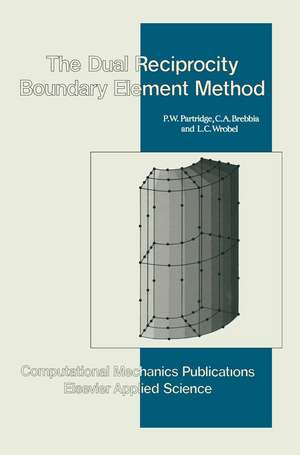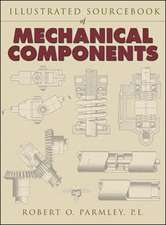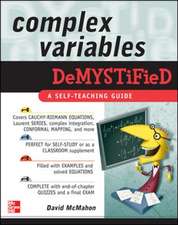Dual Reciprocity Boundary Element Method: International Series on Computational Engineering
Editat de P.W. Partridge, C. A. Brebbia, Wrobelen Limba Engleză Hardback – 31 dec 1991
Preț: 590.63 lei
Preț vechi: 694.86 lei
-15% Nou
Puncte Express: 886
Preț estimativ în valută:
113.03€ • 122.73$ • 94.95£
113.03€ • 122.73$ • 94.95£
Carte tipărită la comandă
Livrare economică 22 aprilie-06 mai
Preluare comenzi: 021 569.72.76
Specificații
ISBN-13: 9781851667000
ISBN-10: 1851667008
Pagini: 284
Ilustrații: XVI, 284 p.
Dimensiuni: 155 x 235 mm
Greutate: 0.6 kg
Ediția:1991
Editura: SPRINGER NETHERLANDS
Colecția Springer
Seria International Series on Computational Engineering
Locul publicării:Dordrecht, Netherlands
ISBN-10: 1851667008
Pagini: 284
Ilustrații: XVI, 284 p.
Dimensiuni: 155 x 235 mm
Greutate: 0.6 kg
Ediția:1991
Editura: SPRINGER NETHERLANDS
Colecția Springer
Seria International Series on Computational Engineering
Locul publicării:Dordrecht, Netherlands
Public țintă
ResearchCuprins
1 Introduction.- 2 The Boundary Element Method for Equations ?2u = 0 and ?2u = b.- 2.1 Introduction.- 2.2 The Case of the Laplace Equation.- 2.3 Formulation for the Poisson Equation.- 2.4 Computer Program 1.- 2.5 References.- 3 The Dual Reciprocity Method for Equations of the Type ?2u = b(x, y).- 3.1 Equation Development.- 3.2 Different f Expansions.- 3.3 Computer Implementation.- 3.4 Computer Program 2.- 3.5 Results for Different Functions b = b(x,y).- 3.6 Problems with Different Domain Integrals on Different Regions.- 3.7 References.- 4 The Dual Reciprocity Method for Equations of the Type ?2u = b(x, y, u).- 4.1 Introduction.- 4.2 The Convective Case.- 4.3 The Helmholtz Equation.- 4.4 Non-Linear Cases.- 4.5 Computer Program 3.- 4.6 Three-Dimensional Analysis.- 4.7 References.- 5 The Dual Reciprocity Method for Equations of the Type ?2u = b(x, y, u, t).- 5.1 Introduction.- 5.2 The Diffusion Equation.- 5.3 Computer Program 4.- 5.4 Special f Expansions.- 5.5 The Wave Equation.- 5.6 The Transient Convection-Diffusion Equation.- 5.7 Non-Linear Problems.- 5.8 References.- 6 Other Fundamental Solutions.- 6.1 Introduction.- 6.2 Two-Dimensional Elasticity.- 6.3 Plate Bending.- 6.4 Three-Dimensional Elasticity.- 6.5 Transient Convection-Diffusion.- 6.6 References.- 7 Conclusions.- Appendix 1.- Appendix 2.- The Authors.












